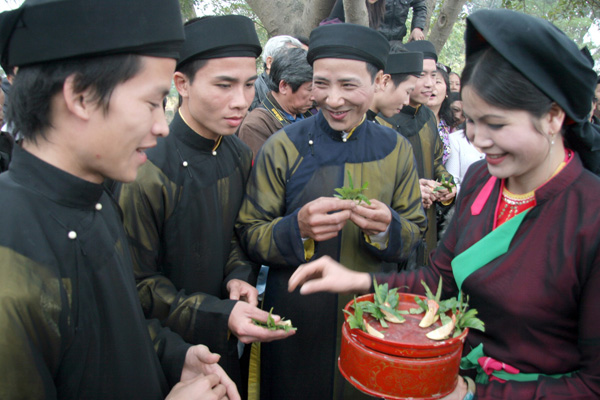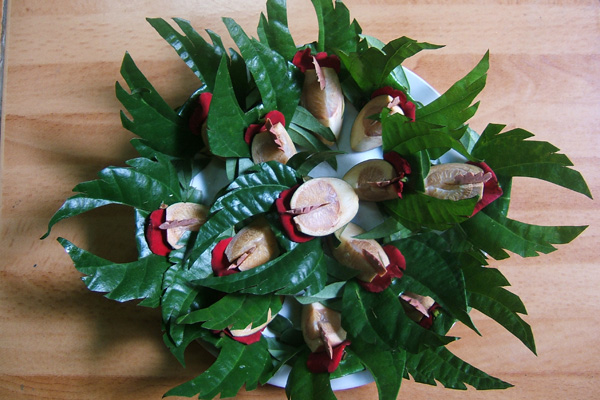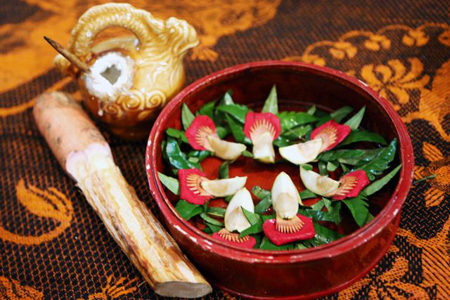According to legends, chewing quid of betel and areca has been a custom since the Hung Vuong period and is connected to the antique legend of betel and areca.
Chewing Betel & Areca Nuts
A quid of betel also called trau, is composed of four elements: an areca leaf (sweet taste), betel bark (hot taste), a chay root (bitter taste), and hydrated lime (pungent taste). The custom of chewing betel nut is unique to Vietnam. Old health books claim that "chewing betel and areca nut makes the mouth fragrant, decreases bad tempers, and makes digesting food easy". A quid of betel makes people become closer and more openhearted. At any wedding ceremony, there must be a dish of betel and areca nut, which people can share as they enjoy the special occasion.

During Tet festival, betel and areca nut is used for inviting visitors and making acquaintances. Sharing a quid of betel with an old friend is like expressing gratitude for the relationship. A quid of betel and areca nut makes people feel warm on cold winters days, and during funerals it relieves sadness. Betel and areca nuts are also used in offerings. When Vietnamese people worship their ancestors, betel and areca nut must be present at the altar. Nowadays, the custom of chewing betel remains popular in some Vietnamese villages and among the old.

Smoking Thuoc Lao
Do not forget to mention thuoc lao or strong tobacco. For women, betel can initiate various feminine conversation, but for men, thuoc lao is related to their joyfulness as well as the sadness in their lives. Peasants always carry their dieu cay (pipe for smoking while plowing the rice fields).



